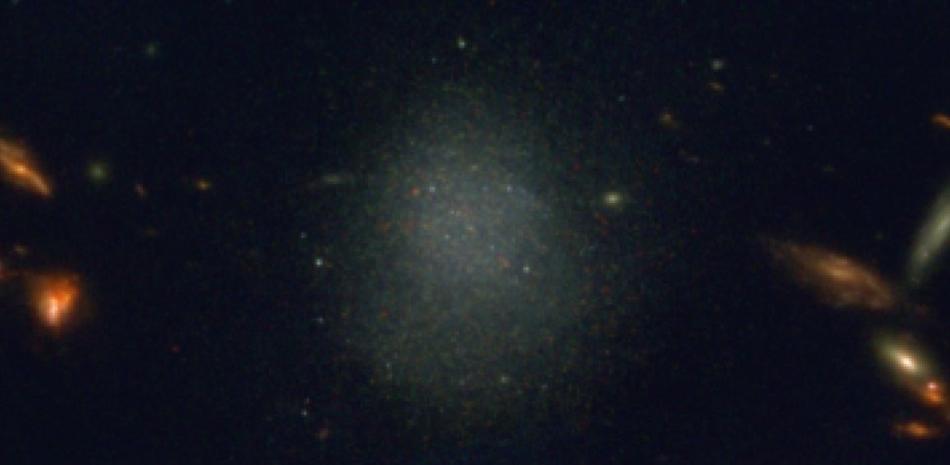Astronomers have discovered an isolated dwarf galaxy that appeared in images from the James Webb Space Telescope and lacked star formation and was not the main focus of the observation.
Galaxies are bound together by gravity and are composed of stars and planets, large clouds of dust and gas, and dark matter. Dwarf galaxies are the most abundant in the Universe and, by definition, the smallest and least luminous. There are less than 100 million stars in them, while the Milky Way, for example, has almost 200 billion stars.
Recent dwarf galaxy observations of an abundance of “ultradiffuse galaxies” beyond the scope of previous large spectroscopic surveys suggest that our understanding of dwarf galaxy populations may be incomplete.
In the new study, a team led by Arizona State University Assistant Research Scientist Tim Carleton was initially observing a galaxy cluster as part of the JWST Prime Extragalactic Areas in Reionization and Lensing Science (PEARLS) project.
The dwarf galaxy, PEARLSDG, appeared in some of the team's JWST images. It wasn't the target, just some distance away from the main observatory, in a region of space where they didn't expect to see anything.
Their results are published in the Astrophysical Journal Letters.
PEARLSDG does not have the typical characteristics of a dwarf galaxy that one would expect to see. It doesn't interact with a nearby galaxy, but it doesn't form new stars either. It turns out that this is an interesting case of an isolated passive galaxy.
“Isolated, inactive dwarf galaxies of this type have not been seen before, except in relatively few cases. In fact, they are not expected to exist. Based on our current understanding of galaxy evolution, our observation of this object helps us improve our theories of galaxy formation,” Carleton said in a statement. said in the statement. “In general, isolated dwarf galaxies are constantly forming new stars.”
Until now, astronomers' understanding of galaxy evolution showed an isolated galaxy that would either continue to form young stars or interact with a more massive companion galaxy. This theory does not apply to PEARLSDG, which appears to be an ancient stellar population that does not form new stars and is secretive.
As an added surprise, individual stars can be seen in the group's JWST images. These stars are the brightest at JWST wavelengths; It is one of the most distant galaxies in which we can see these stars with this level of detail. The brightness of these stars allows astronomers to measure their distance: 98 million light years.
For this study, Carleton and team used image data from JWST's Infrared Camera (NIRCam); Spectroscopic data from the DeVeney Optical Spectrograph at the Lowell Discovery Telescope in Flagstaff, Arizona; Archival images from NASA's Galactic and Spitzer space telescopes; and ground images from the Sloan Digital Sky Survey and the Dark Energy Camera Legacy Survey.





